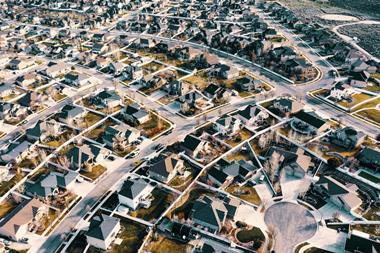Cromwell and Dasos have announced they want to create a €1bn portfolio made up entirely of wooden buildings. Christopher Walker speaks to Cromwell’s European managing director
Six months after being appointed to run Cromwell Property Group’s European arm, Pertti Vanhanen is spearheading a new fund that aims to create a €1bn real estate portfolio constructed from timber. The unusual offering was announced last week, followed shortly by the appointment of Eeva Saravuo, a former colleague of Vanhanen’s, to manage the Wooden Properties Fund.

Vanhanen says it is still in the development stage. “We have yet to set the fund limits on individual properties, sectors and geographies – this will be done in concert with investors.” As for sectors, “we are very flexible,” he says. “Residential/offices, maybe even public buildings such as schools and court houses”.
Having said that, Vanhanen thinks the focus would be on the Nordics and those other countries in Northern Europe where there is strong support for wooden buildings such as Germany, the Netherlands and France. The French Housing minister Julien Normandie announced last year that all new public buildings would have to be “at least 50% timber or other natural materials” by 2022.
Cromwell has a good pipeline of properties for the fund, and Vanhanen says “it’s amazing how many approaches I have had since we announced the fund”, with strong interest from the UK and Ireland in particular.
He only joined the Cromwell Group in January and this was an idea he brought with him. “I have been committed big time to environmental cause for the last 30 years,” he says. “Coming from Finland, I am close to nature.”
He adds: “I have been thinking about such a fund for the last 10 years, and in the last five years I have been actively dreaming about it with Olli [Haltia]”, the CEO of Dasos Capital, which specialises in sustainable forestry investment and wooden. construction. “We just needed investors to be ready.”
Against the backdrop of COVID-19 and climate-change concerns, that moment has come. “Everyone has seen what is happening to our planet [and] the drive for greater environmental consideration is coming from every direction: government, investors and consumers,” he says. The World Green Building Council states that “building and construction are responsible for 39% of all carbon emissions in the world.”
The new Sustainable Finance Disclosure Regulations are part of this growing focus, and Vanhanen believes this fund will “meet their article 8 criteria at the very least, possibly level 9”. Article 8 funds promote environmental or social characteristics but do not have them as the overarching objective, while Article 9 funds specifically have sustainable goals as their objective.
Because of this, measuring the impact of the fund will of course be important and Vanhanen says he will lean heavily on partner Dasos “who have over 15 years’ experience in impact measurement and calculation methods”. It will include materials sourcing and transportation, and the impact of construction on local communities. Vanhanen believes there is a definite social impact as well. “People who work in wooden buildings are mentally healthier and more productive,” he says.
Cromwell are not alone in eyeing the potential for wooden construction. This week AXA IM Alts announced it acquired a site in central Munich to develop a hybrid timber office with Accumulata Real Estate. And Stora Enso, which is already working with Dasos Capital, have delivered over 15,000 wooden buildings across Europe.
AXA agrees with Vanhanen on the post-construction benefits. “A timber building will offer excellent passive thermal protection and contribute to a balanced working environment through its ability to absorb and release excess moisture,” it said in its announcement this week. This is vital as only 11% of that 39% contribution to CO2 emissions comes from the actual construction.
There will be some challenges. There are unhappy memories in the UK of the risks of timber construction exposed by the infamous Bradford City stadium fire in 1985. Vanhanen admits “regulations are tighter for wooden buildings as you’d expect”, but adds that “wood technology has improved to a level where it can compete with other building materials for ease of use and adaptability, while at the same time being environmentally superior”. He says this is particularly so with the development of cross-laminated timber, which, with its fire-resisting qualities, “you’d have to use gasoline to ignite it”.
Another challenge is soaring timber prices, which have risen by 57% in a year to €270 per cubic metre. But Vanhanen observes: “All raw material prices are rising. Timber is not at a particular disadvantage.” He adds some of this is a temporary spike, caused by surging DIY demand.
This natural material has one important advantage, he says. “At the end of the day forests are growing every moment – bull or bear markets.”
To read the digital edition of the latest IPE Real Assets magazine click here.

















